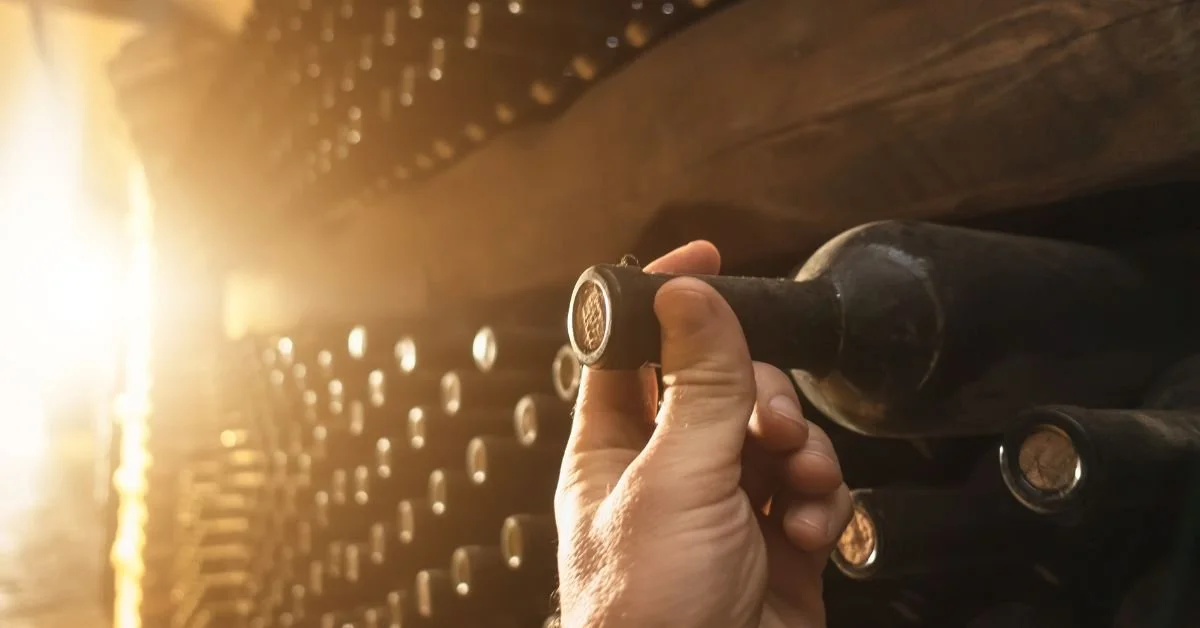What Is the Difference Between Solid Surface and Acrylic Tubs?
Selecting the appropriate tub material is a crucial aspect of any bathroom renovation project.
As a specialist in bathroom installation and design, we in Ability Bathe Devon understand the importance of choosing the right material to ensure both functionality and aesthetic appeal.
In this article, we'll explore two popular tub material options: solid surface and acrylic. Each material has its own unique characteristics and benefits, making it essential for homeowners to understand their differences before making a decision.
By understanding the distinct qualities of solid surface and acrylic tubs, homeowners can make informed choices that align with their preferences and project requirements.
Let's delve into the key features of each material to help you determine the best fit for your bathroom renovation.
Solid Surface Tubs
Solid surface tubs are crafted from a composite material consisting of minerals, resins, and acrylic polymers. This unique blend creates a solid and durable surface that is resistant to stains, scratches, and impact damage. One of the key features of solid surface tubs is their non-porous nature, which makes them exceptionally hygienic and easy to clean. Unlike traditional tub materials like porcelain or fiberglass, solid surface tubs do not have pores that can harbor bacteria or mold, making them ideal for maintaining a clean and healthy bathroom environment.
In addition to their practical benefits, solid surface tubs also offer aesthetic advantages. They have a luxurious appearance reminiscent of natural stone, adding a touch of elegance to any bathroom. Furthermore, solid surface bathtubs can be customized to suit individual preferences and design requirements. Whether you prefer a sleek modern look or a more traditional style, solid surface tubs can be manufactured in a variety of shapes, sizes, and colors to complement your bathroom decor.
Another notable feature of solid surface tubs is their ability to retain heat. The dense composition of the material helps to keep water warmer for longer periods, allowing you to enjoy a relaxing soak without constantly replenishing the hot water. This can contribute to energy savings by reducing the need to continuously heat water throughout your bathing experience.
When it comes to maintenance, solid surface tubs are relatively low-maintenance compared to other tub materials. Routine cleaning with mild soap and water is usually sufficient to keep the tub looking pristine. Additionally, minor scratches or blemishes can often be easily repaired using sandpaper or a mild abrasive cleaner, restoring the tub's appearance to its original condition.
Acrylic Tubs
Acrylic tubs have gained popularity in the realm of bathroom design due to their lightweight and versatile nature. Made from acrylic sheets reinforced with fiberglass, these tubs offer a blend of affordability, durability, and aesthetic appeal that makes them a popular choice for homeowners and designers alike.
One of the key advantages of acrylic tubs is their lightweight construction, which makes them easier to handle and install compared to heavier materials like cast iron or solid surface. This characteristic not only simplifies the installation process but also reduces the risk of structural damage to the bathroom floor. Experienced ASL Remodeling bathroom experts suggest going for this option when homeowners are looking for a practical solution without compromising on style. The ease of installation can also help keep renovation timelines shorter and more manageable.
In addition to their ease of installation, acrylic tubs are known for their wide range of color and design options. Unlike traditional tub materials that are limited in color choices, acrylic tubs can be manufactured in virtually any color imaginable, allowing homeowners to match their tub to their preferred aesthetic style and bathroom decor. Furthermore, acrylic tubs can be molded into various shapes and sizes, making them suitable for bathrooms of all sizes and layouts.
Another notable feature of acrylic tubs is their ability to retain heat. The insulating properties of acrylic help to keep bathwater warmer for longer periods, providing a more enjoyable and relaxing bathing experience. This can contribute to energy savings by reducing the need to continuously add hot water during extended baths.
Acrylic tubs are also prized for their scratch-resistant properties, which help to maintain their appearance and durability over time. Unlike some other tub materials that are prone to scratches and chips, acrylic tubs are highly resistant to damage from everyday use, making them an excellent long-term investment for homeowners.
When it comes to maintenance, acrylic tubs are relatively easy to clean and maintain. Routine cleaning with a mild soap and water solution is usually sufficient to keep the tub looking pristine. Additionally, minor scratches or blemishes can often be buffed out using a polishing compound or acrylic repair kit, restoring the tub's surface to its original luster.
Comparing Solid Surface and Acrylic Tubs
When it comes to selecting the right tub material for your bathroom, it's essential to consider various factors such as durability, cost, heat retention, ease of maintenance, and customization potential. Solid surface and acrylic are two popular options, each with its own set of advantages and disadvantages. Let's compare these two tub materials to help you make an informed decision.
1. Durability
Solid surface tubs are known for their exceptional durability. Made from a blend of minerals, resins, and acrylic polymers, solid surface tubs are resistant to chipping, scratching, and staining, making them a long-lasting option for your bathroom. They can withstand daily wear and tear without showing signs of damage, making them an excellent choice for high-traffic bathrooms.
On the other hand, acrylic tubs are also durable but may not be as resistant to scratches and chips as solid surface tubs. While acrylic tubs are reinforced with fiberglass for added strength, they may still be susceptible to damage from sharp objects or heavy impacts. However, with proper care and maintenance, acrylic tubs can remain in good condition for many years.
2. Cost
In terms of cost, acrylic tubs are generally more affordable than solid surface tubs. Acrylic is a lightweight and inexpensive material, making it a budget-friendly option for homeowners looking to renovate their bathrooms without breaking the bank. Acrylic tubs are available in a wide range of price points to suit different budgets, making them accessible to homeowners with varying financial constraints.
Solid surface tubs, on the other hand, tend to be more expensive due to the higher quality materials used in their construction. The blend of minerals, resins, and acrylic polymers that comprise solid surface tubs results in a luxurious and durable product that comes with a higher price tag. While solid surface tubs may require a larger upfront investment, many homeowners consider them worth the cost for their durability and aesthetic appeal.
3. Heat Retention
When it comes to heat retention, solid surface tubs have the edge over acrylic tubs. Solid surface tubs retain heat more effectively, allowing bathwater to stay warm for longer periods. This can enhance the bathing experience by providing a relaxing and comfortable soak without the need to constantly add hot water.
Acrylic tubs also offer decent heat retention properties but may not be as efficient as solid surface tubs in this regard. However, acrylic tubs can still provide a warm and inviting bathing experience, especially when paired with a quality insulation layer.
4. Ease of Maintenance
Both solid surface and acrylic tubs are relatively easy to maintain. Solid surface tubs are non-porous and resistant to stains, making them easy to clean with a mild soap and water solution. They also require minimal maintenance to keep them looking like new, making them a convenient option for busy homeowners.
Similarly, acrylic tubs are also easy to clean and maintain. Acrylic is a smooth and non-porous material that resists mold, mildew, and bacteria growth, making it easy to wipe down with a soft cloth or sponge. Acrylic tubs can be cleaned with mild household cleaners or acrylic-specific cleaners to remove any dirt or grime.
5. Customization Potential
In terms of customization potential, both solid surface and acrylic tubs offer a range of design options to suit different preferences and styles. Solid surface tubs can be molded into various shapes and sizes, allowing for custom designs and configurations to fit your bathroom space perfectly. Additionally, solid surface tubs can be seamlessly integrated with other bathroom fixtures, such as sinks and countertops, for a cohesive look.
Acrylic tubs also offer customization options, with a wide range of colors, shapes, and sizes available to match your bathroom decor. Acrylic tubs can be installed as freestanding, alcove, or drop-in models, providing flexibility in design and layout. Additionally, acrylic tubs can be accessorized with features such as whirlpool jets or air massage systems for added comfort and luxury.
How To Select the Right Tub Material for Your Bathroom
Selecting the right tub material is crucial for creating a bathroom environment that meets your needs, fits your budget, and aligns with your design preferences. When choosing between solid surface and acrylic tubs, there are several factors to consider to ensure you make the best decision for your bathroom:
Bathroom Environment
Consider the specific characteristics of your bathroom environment, such as size, layout, and ventilation. Solid surface tubs are ideal for larger bathrooms with ample space, as they often feature luxurious designs and custom configurations. Acrylic tubs, on the other hand, are more versatile and can fit into various bathroom layouts, making them suitable for smaller spaces or awkwardly shaped bathrooms.
Budget
Determine your budget for the tub installation project and consider the cost of both solid surface and acrylic tubs. While solid surface tubs tend to be more expensive upfront due to their high-quality materials and luxurious appearance, acrylic tubs offer a more budget-friendly option without compromising on quality or style. Choose a tub material that fits within your budget constraints while still meeting your desired aesthetic and functional requirements.
Long-Term Maintenance
Think about the long-term maintenance requirements of the tub material you choose. Solid surface tubs are known for their durability and resistance to stains, scratches, and damage, making them relatively low-maintenance options. However, they may require occasional resealing or refinishing to maintain their appearance over time. Acrylic tubs are also easy to maintain, requiring regular cleaning with mild soap and water to keep them looking like new. Consider your willingness and ability to perform ongoing maintenance tasks when selecting a tub material.
Usage
Consider how the tub will be used in your household and factor in your lifestyle and bathing habits. If you enjoy long, leisurely baths and prioritize comfort and luxury, a solid surface tub with excellent heat retention properties may be the best choice for you. However, if you have a busy household with frequent baths or showers, an acrylic tub with quick heat-up times and easy cleaning may be more practical.
Style Preferences
Lastly, consider your personal style preferences and the overall design aesthetic of your bathroom. Solid surface tubs offer a luxurious and sophisticated look with customizable designs and finishes, making them ideal for modern or contemporary bathrooms. Acrylic tubs come in a wide range of colors and shapes, allowing for greater flexibility in matching your bathroom decor and style.
Conclusion
In conclusion, choosing the right tub material is vital for a successful bathroom renovation. Homeowners should carefully consider factors such as durability, cost, maintenance, usage, and style preferences when deciding between solid surface and acrylic tubs. Consulting with bathroom professionals can provide valuable insights and guidance to make an informed decision that aligns with their unique needs and preferences. By weighing the pros and cons of each tub material and prioritizing long-term satisfaction, homeowners can create a bathroom space that is both functional and aesthetically pleasing, enhancing the overall enjoyment and value of their home.





